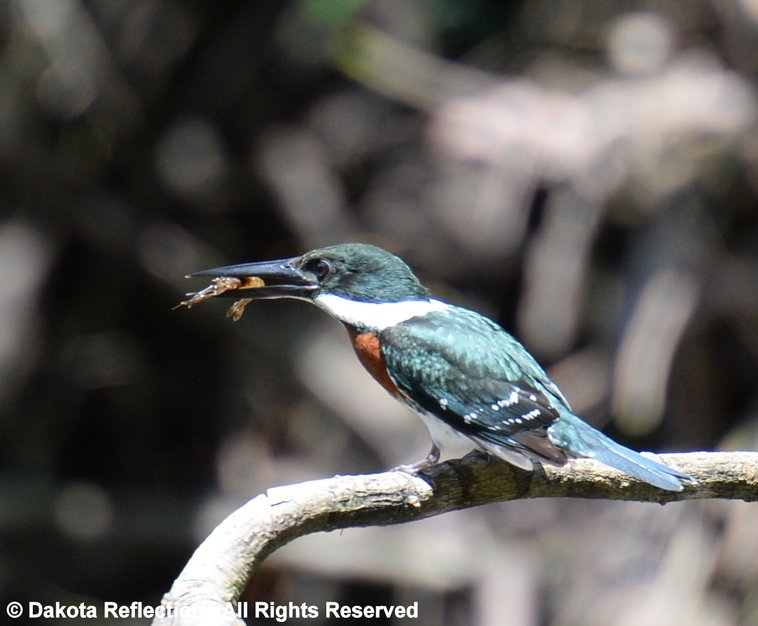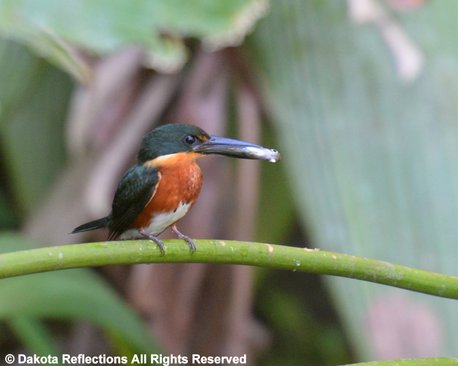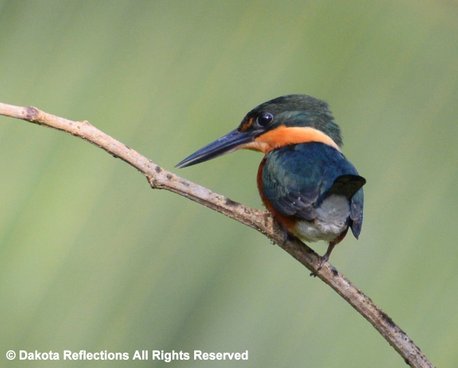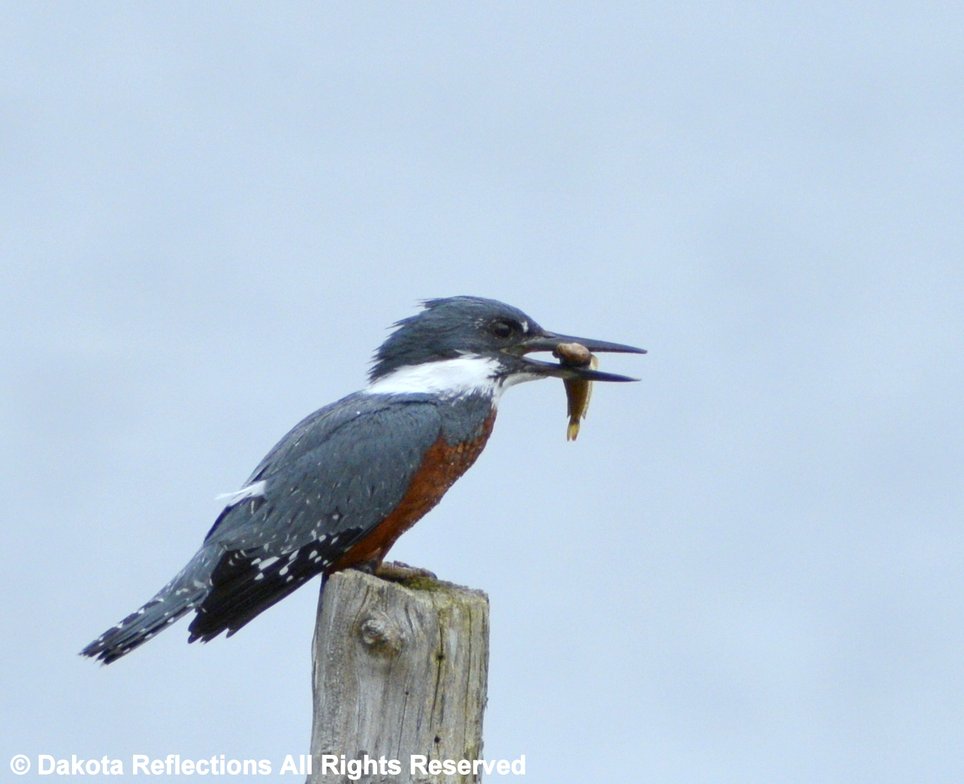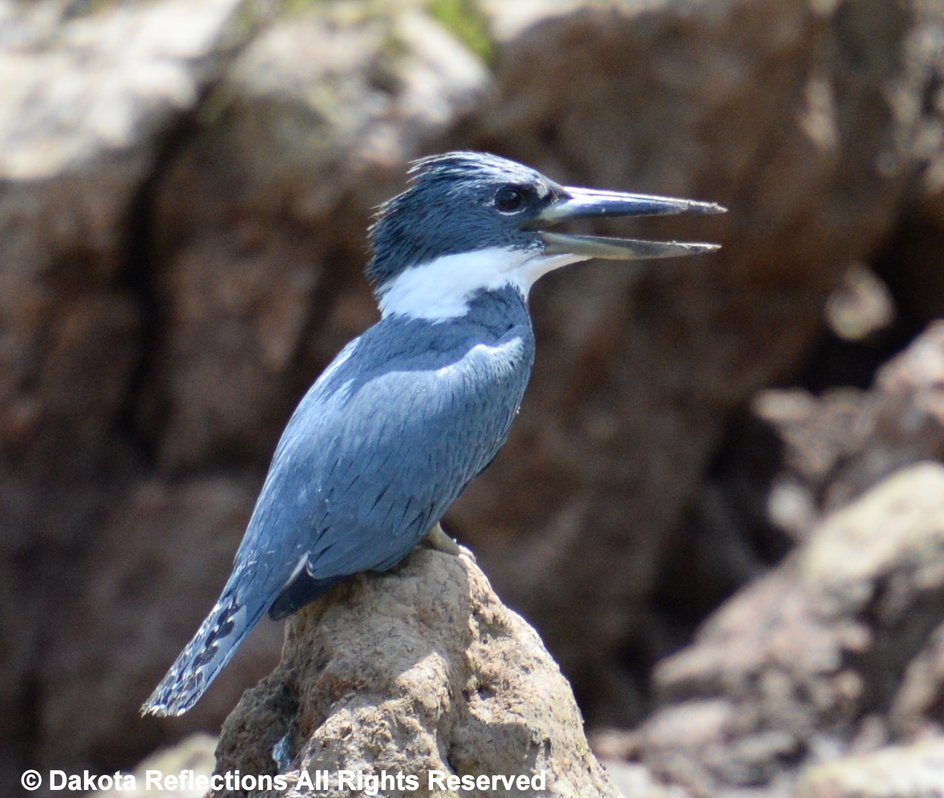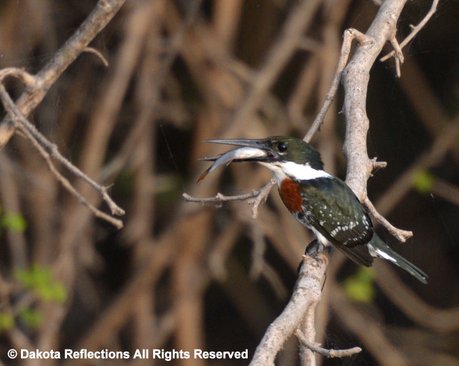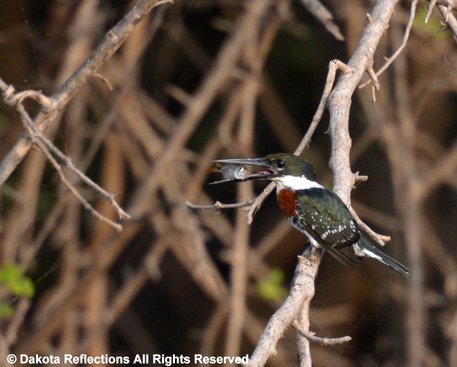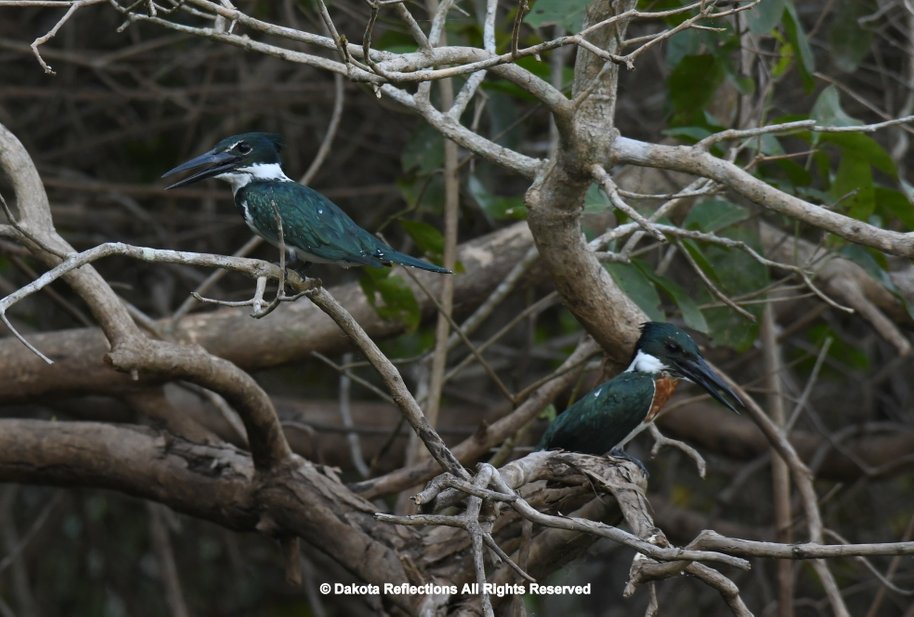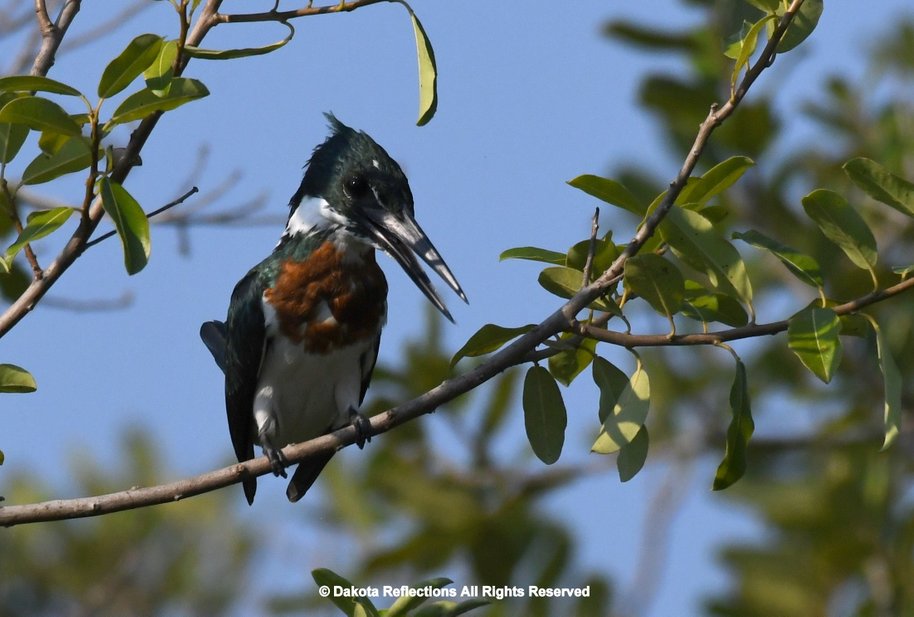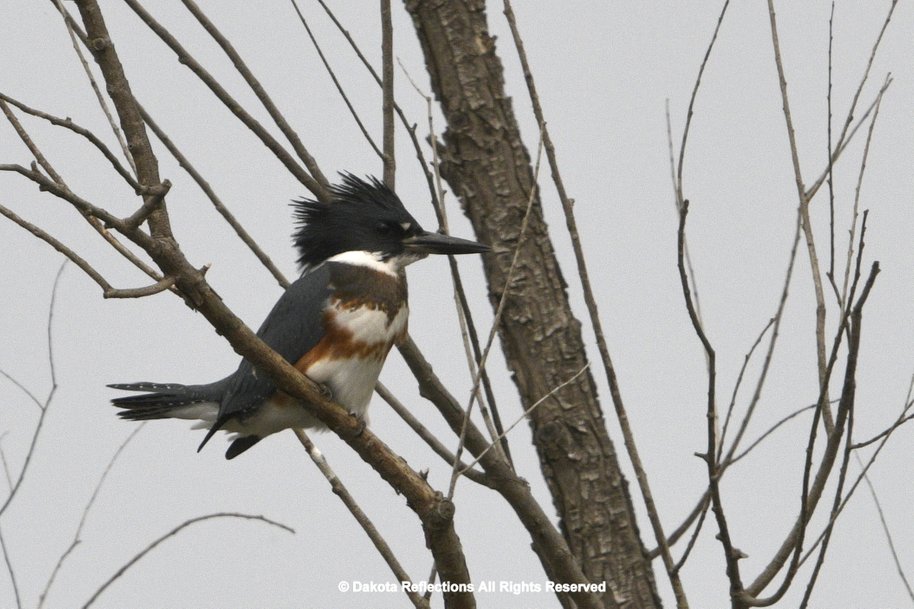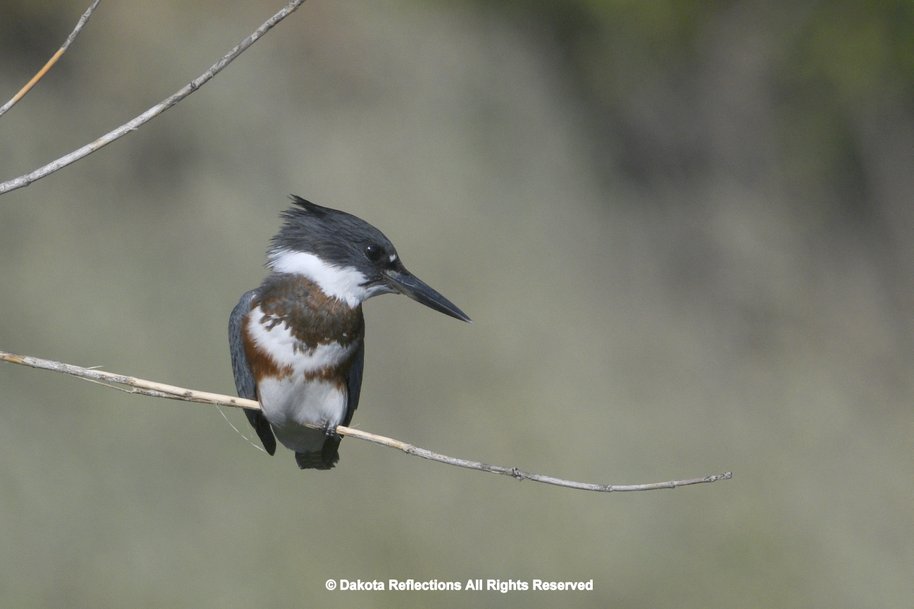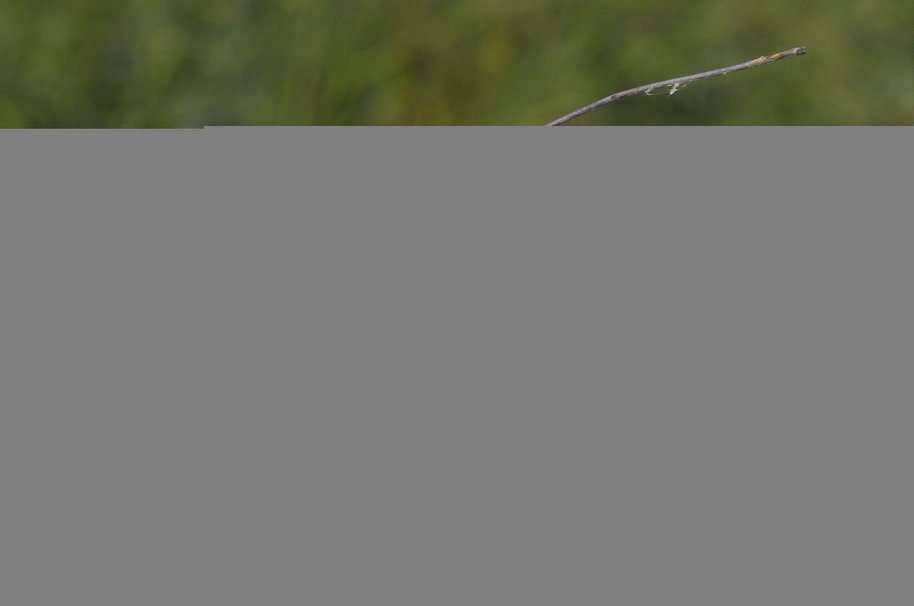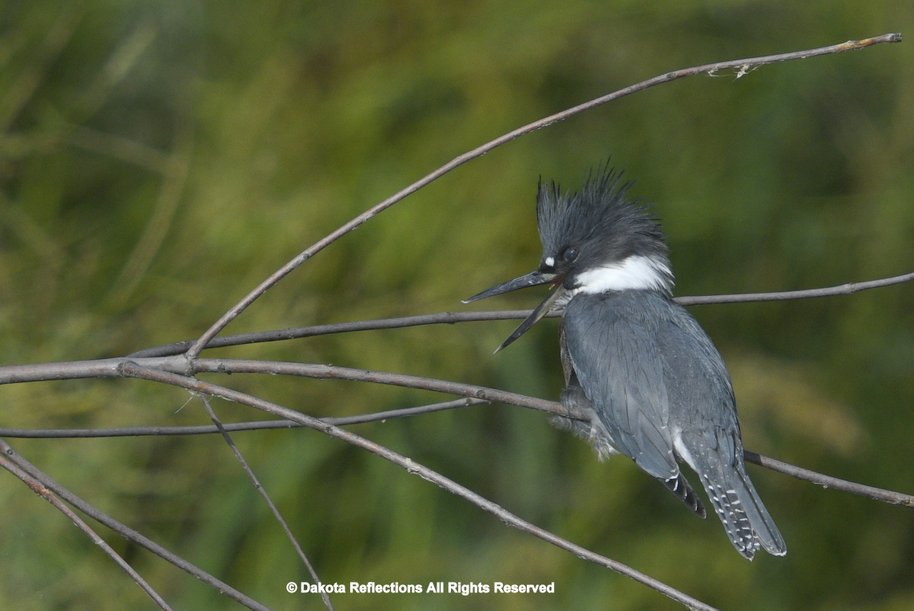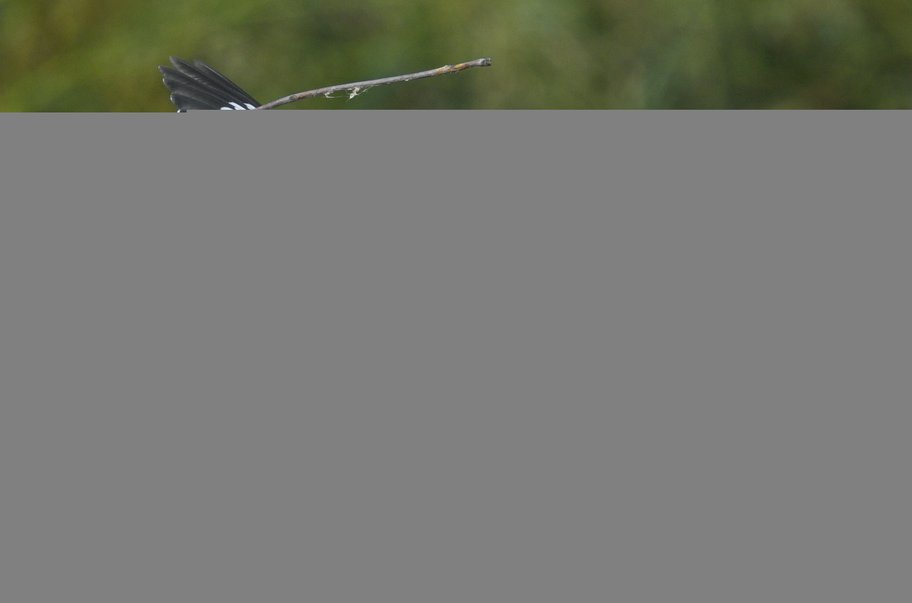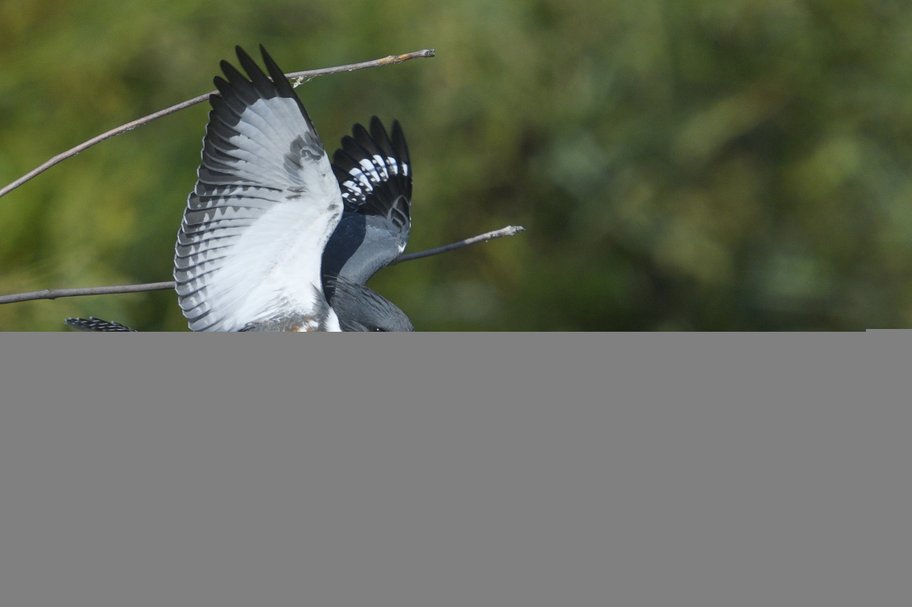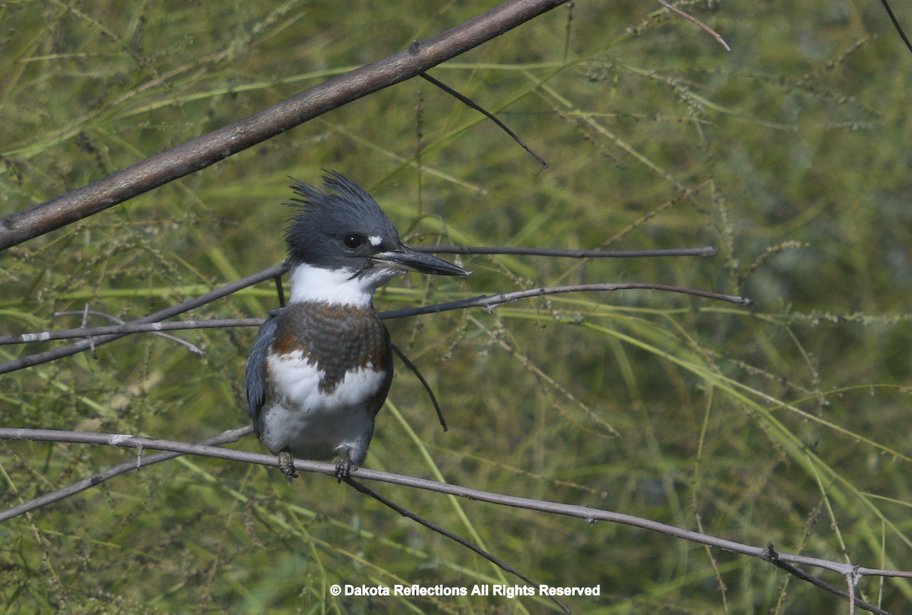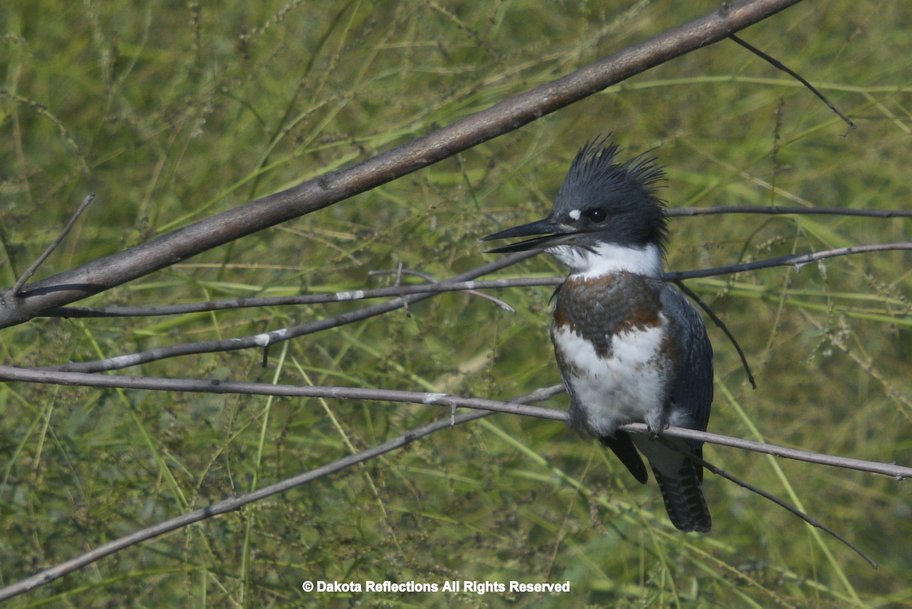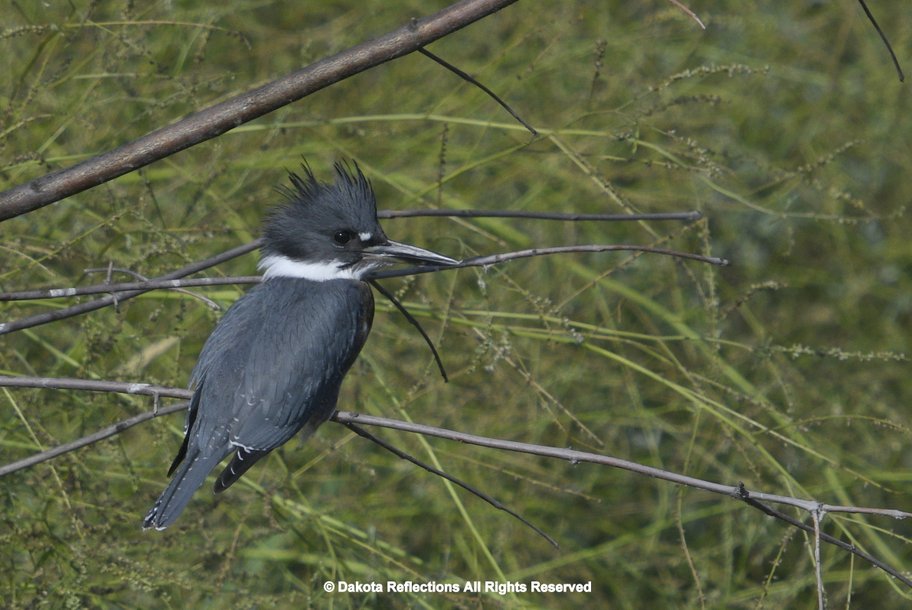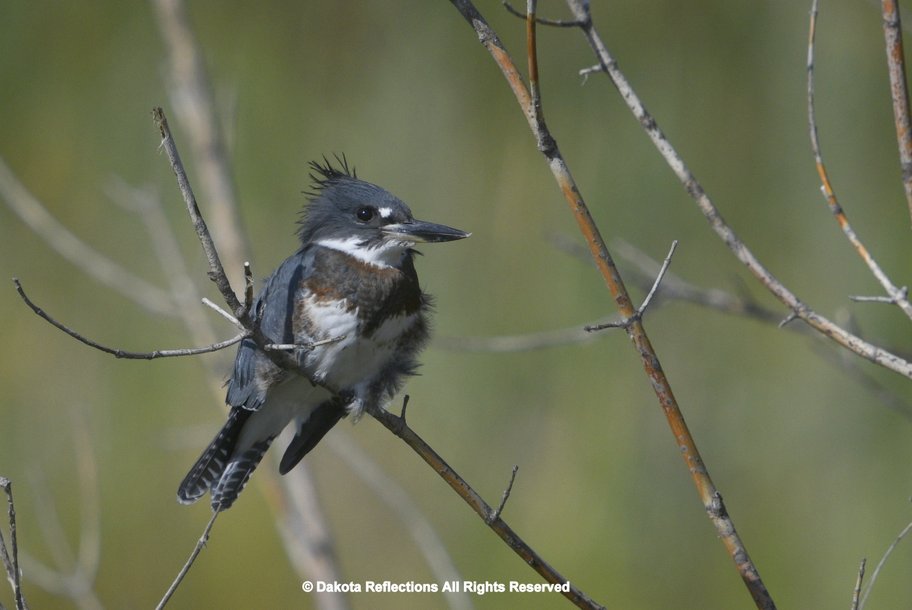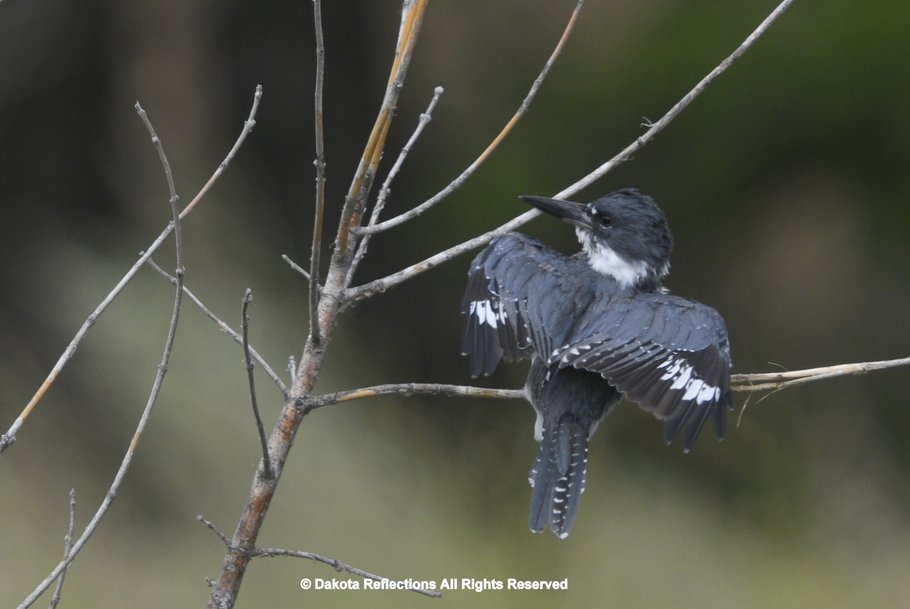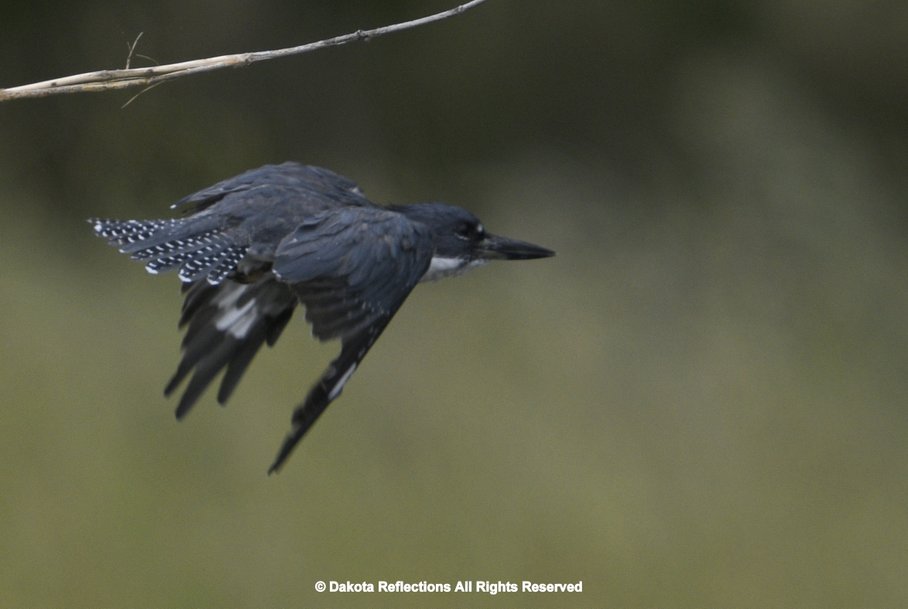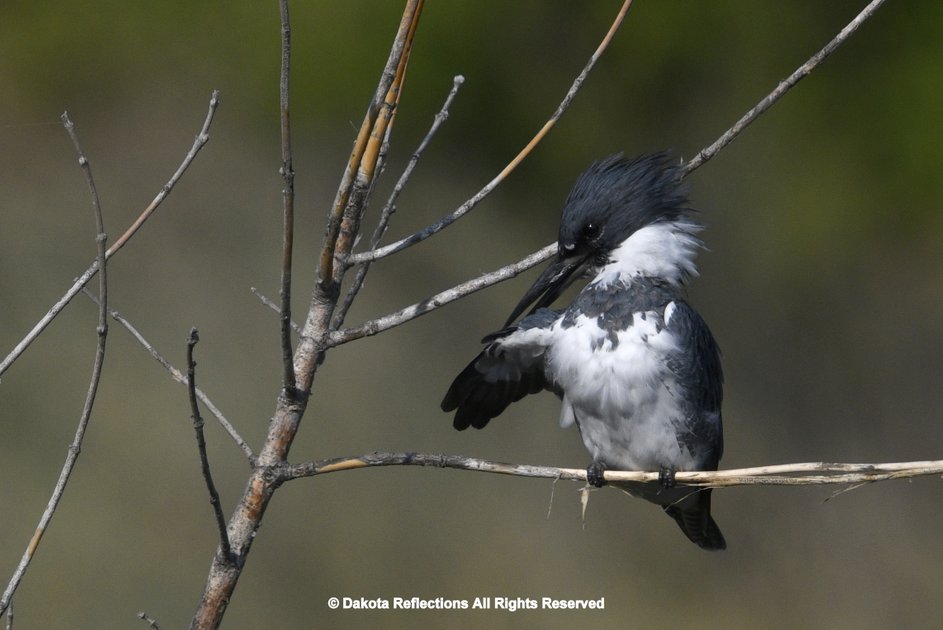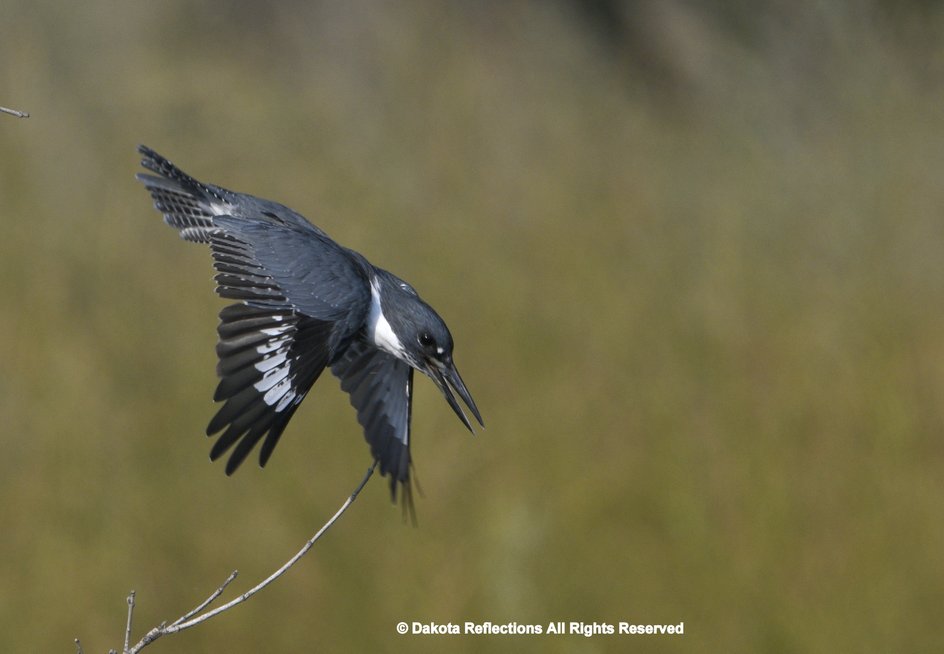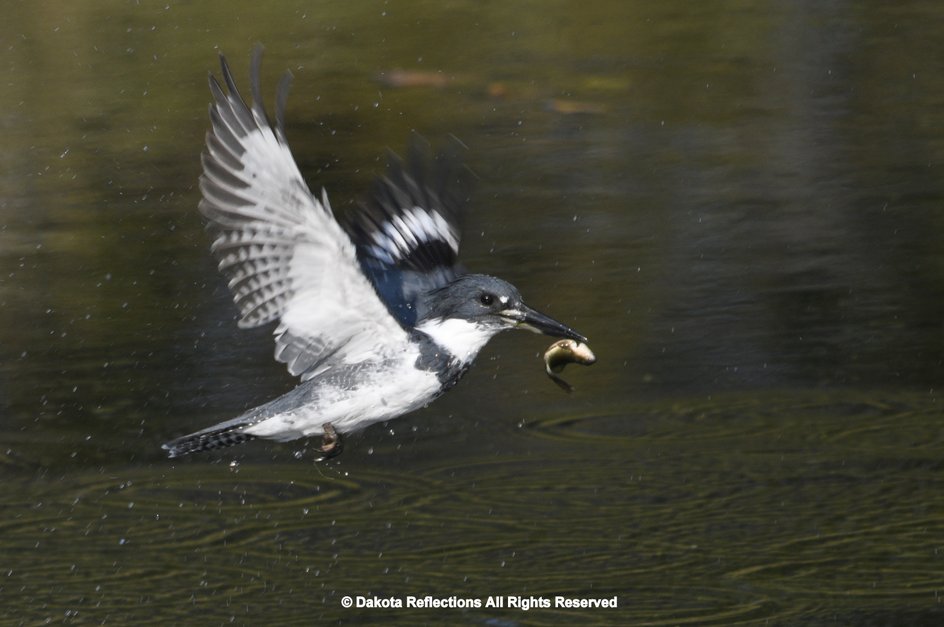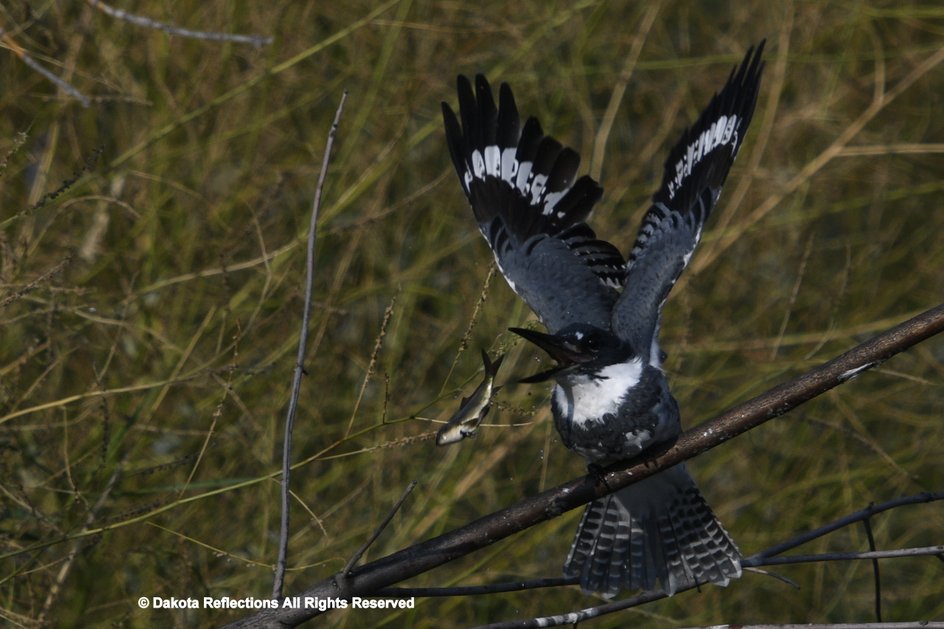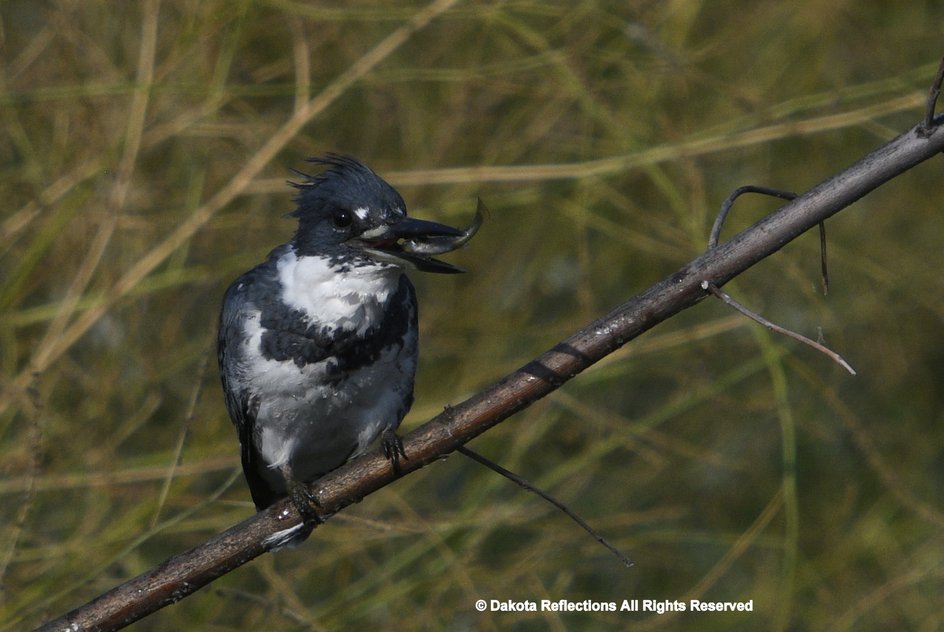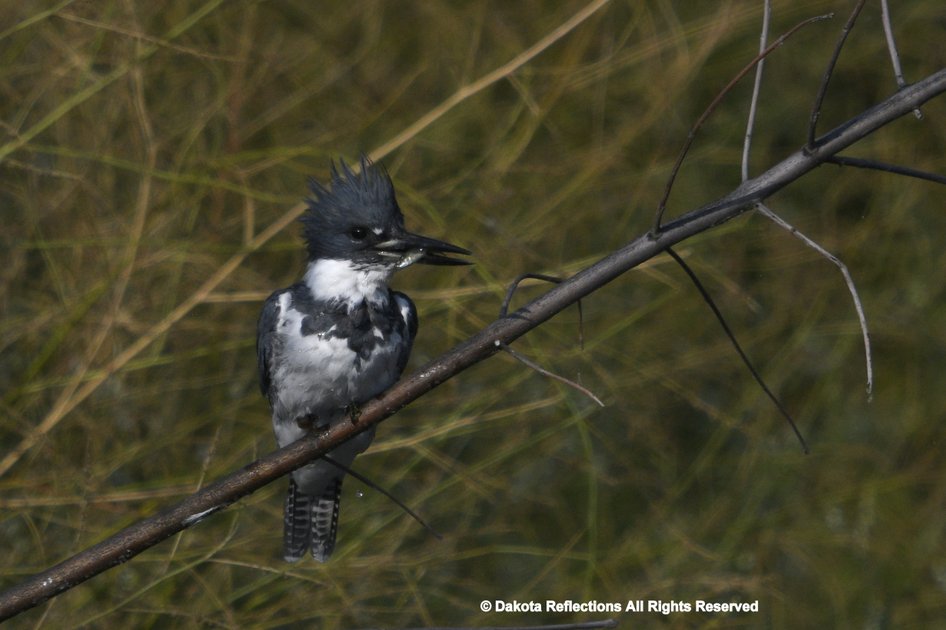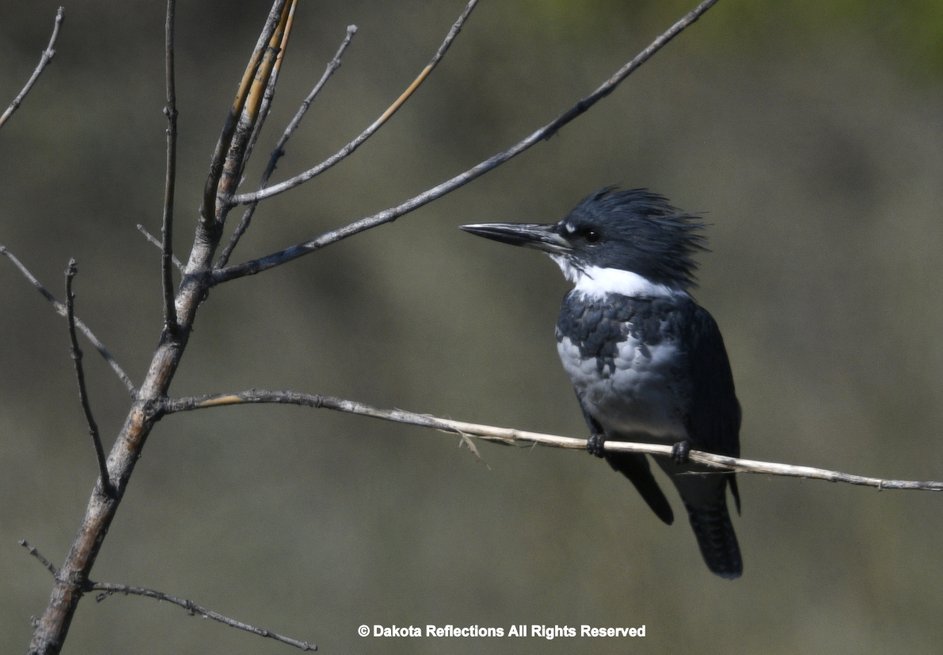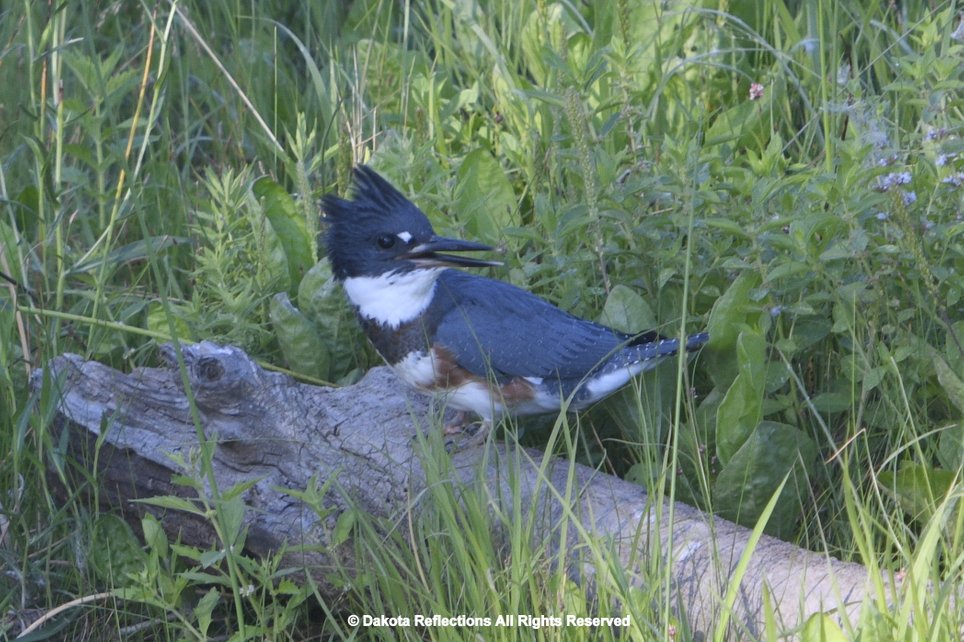Dakota Reflections
Kingfishers
There are about 90 species of kingfishers. They are found primarily in the tropics although the belted kingfisher comes to North Dakota and parts further north each year. Many kingfishers live near water and feed on small fish but many others live far away from water and feed on small invertebrates. They all have large heads, long strong bills, short legs and tails and most are brightly colored.
Green Kingfisher
Tortuguero National Park
Costa Rica
American Pigmy Kingfisher
Tortuguero National Park
Costa Rica
American Pigmy Kingfisher
Tortuguero National Park
Costa Rica
The American pygmy kingfisher is a resident breeding kingfisher which occurs in the American tropics from southern Mexico south through Central America to western Ecuador, and then around the northern Andes cordillera in the east to central Bolivia and central Brazil. The species occupies the entire Amazon basin and the Tocantins River drainage adjacent in Pará state Brazil. It also occurs on Trinidad. A molecular phylogenetic study published in 2006 found that the American pygmy kingfisher was a sister species to the green-and-rufous kingfisher and the green kingfisher. The American pygmy kingfisher is 13 cm (5.1 in) long and weighs 10–16 g (0.35–0.56 oz). It has the typical kingfisher shape, with a short tail and long bill. It is oily green above, with a yellow-orange collar around the neck, rufous underparts and a white belly. This tiny kingfisher occurs in dense forests and mangrove swamps along small streams or rivers with heavily vegetated banks. The unlined nest is in a horizontal tunnel up to 40 cm (16 in) long made in a river bank, earth heap, or occasionally an arboreal termite nest. The female lays three, sometimes four, white eggs. American pygmy kingfishers perch quietly on a low branch close to water before plunging in head first after small fish or tadpoles. They will also hawk for insects. They are not shy, but easily overlooked as they sit silently amongst riverside branches.
https://en.wikipedia.org/wiki/American_pygmy_kingfisher
Ringed Kingfisher
Ushuaia
Argentina
Ringed Kingfisher
Tortuguero National Park
Costa Rica
Banded Kingfisher
Way Kambas National Park
Sumatra
Indonesia
Green Kingfisher
Tortuguero National Park
Costa Rica
Green Kingfisher
Crooked Tree Wild Life Sanctuary
Belize
The White-throated Kingfisher, also known as the white-breasted kingfisher, is a tree kingfisher, widely distributed in Asia from the Sinai east through the Indian subcontinent to the Philippines. This kingfisher is a resident over much of its range, although some populations may make short distance movements. It can often be found well away from water where it feeds on a wide range of prey that includes small reptiles, amphibians, crabs, small rodents and even birds.
https://en.wikipedia.org/wiki/White-throated_kingfisher
The Common Kingfisher also known as the Eurasian kingfisher, and river kingfisher, is a small kingfisher with seven subspecies recognized within its wide distribution across Eurasia and North Africa. It is resident in much of its range, but migrates from areas where rivers freeze in winter. This sparrow-sized bird has the typical short-tailed, large-headed kingfisher profile; it has blue upperparts, orange underparts and a long bill. It feeds mainly on fish, caught by diving, and has special visual adaptations to enable it to see prey under water.
https://en.wikipedia.org/wiki/Common_kingfisher
The Pied Kingfisher is a water kingfisher and is found widely distributed across Africa and Asia. Originally described by Linnaeus in 1758, it has five recognized subspecies. Its black and white plumage, crest and the habit of hovering over clear lakes and rivers before diving for fish make it distinctive. Males have a double band across the breast while females have a single gorget that is often broken in the middle. They are usually found in pairs or small family parties. When perched, they often bob their head and flick up their tail.
https://en.wikipedia.org/wiki/Pied_kingfisher
The Stork-billed Kingfisher, is a tree kingfisher which is widely but sparsely distributed in the tropical Indian subcontinent and Southeast Asia, from India to Indonesia. This kingfisher is resident throughout its range. It is a very large kingfisher, measuring 35 cm (14 in) in length. The Stork-billed Kingfisher lives in a variety of well-wooded habitats near lakes, rivers, or coasts. It perches quietly whilst seeking food, and is often inconspicuous despite its size. It is territorial and will chase away eagles and other large predators. This species hunts fish, frogs, crabs, rodents and young birds.
https://en.wikipedia.org/wiki/Stork-billed_kingfisher
Ringed Kingfisher
The ringed kingfisher is a large, conspicuous and noisy kingfisher bird commonly found along the lower Rio Grande valley in southeasternmost Texas in the United States through Central America to Tierra del Fuego in South America. It is a Neotropical kingfisher that lives in habitats ranging between the USA and Mexico. In 1888, the species was first discovered in the USA, while the first Ringed Kingfisher nest was found in 1970. They are commonly seen along the Rio Grande and in waterbodies in southern Texas. Their distribution is increasing and expanding upwards. Ringed Kingfishers can perch for several hours on trees while watching for prey in the freshwater. While Belted Kingfishers, its counterpart, perches for only a few moments. Ringed Kingfisher have also been observed to forage in marine water. They catch their prey by diving from a perch. Ringed Kingfisher’s diet is largely dependent on fish, while sometimes targeting invertebrates, crabs and crustaceans.
https://en.wikipedia.org/wiki/Ringed_kingfisher
Amazon Kingfisher
The Amazon kingfisher is a resident breeding kingfisher in the lowlands of the American tropics from southern Mexico south through Central America to northern Argentina. The Amazon kingfisher resembles the green kingfisher which shares its range, but it is much larger than its relative, and three to four times as heavy. It is 30 cm (12 in) in length and weighs 98–140 g (3.5–4.9 oz). This large kingfisher breeds by streams. The unlined nest is in a horizontal tunnel made in a river bank, and up to 1.6 m long and 10 cm wide. The female lays three, sometimes four, white eggs. Amazon kingfishers are often seen perched on a branch or rock close to water before plunging in head first after their fish prey. They also feed on insects, fish and amphibians.
https://en.wikipedia.org/wiki/Amazon_kingfisher
Green Kingfisher
The green kingfisher is a resident breeding bird which occurs from southern Texas in the United States south through Central and South America to central Argentina. This small kingfisher breeds by streams in forests or mangroves. The nest is in a horizontal tunnel which is dug by both sexes. It is up to a meter long made in a river bank. The female lays between three and six white eggs. Green kingfishers are often seen perched on a low shaded branch close to water before plunging in head first after fish. They also eat aquatic insects. These birds often give a pebbly rattling call.
https://en.wikipedia.org/wiki/Green_kingfisher
2020 Photographs
Belted Kingfisher
Oliver County, North Dakota
September 13, 2020
Belted Kingfisher
Oliver County, North Dakota
Photo of the Day- September 13, 2020
2021 Photographs
Belted Kingfisher
Burleigh County, North Dakota
August 21, 2021
Belted Kingfisher
Burleigh County, North Dakota
August 21, 2021
Belted Kingfisher
Burleigh County, North Dakota
August 21, 2021
Tongue is Visible!
Belted Kingfisher
Burleigh County, North Dakota
August 21, 2021
Belted Kingfisher
Burleigh County, North Dakota
August 21, 2021
Belted Kingfisher
Burleigh County, North Dakota
August 21, 2021
Beautiful!
Belted Kingfisher
Burleigh County, North Dakota
Photo of the Day- August 21, 2021
Belted Kingfisher
Burleigh County, North Dakota
August 21, 2021
Belted Kingfisher
Burleigh County, North Dakota
August 21, 2021
Belted Kingfisher
Burleigh County, North Dakota
August 21, 2021
Belted Kingfisher
Burleigh County, North Dakota
August 21, 2021
Belted Kingfisher
Burleigh County, North Dakota
August 21, 2021
Belted Kingfisher
Burleigh County, North Dakota
August 24, 2021
Belted Kingfisher
Burleigh County, North Dakota
August 24, 2021
Grooming!
Belted Kingfisher
Burleigh County, North Dakota
September 9, 2021
Diving for Food!
Belted Kingfisher
Burleigh County, North Dakota
September 9, 2021
A Long Time Coming for the Photo!
Belted Kingfisher
Burleigh County, North Dakota
September 9, 2021
Big Fish!
Belted Kingfisher
Burleigh County, North Dakota
September 9, 2021
Down the Hatch?
Belted Kingfisher
Burleigh County, North Dakota
September 9, 2021
The One that Got Away!
Belted Kingfisher
Burleigh County, North Dakota
September 9, 2021
Where did it Go?
Belted Kingfisher
Burleigh County, North Dakota
September 9, 2021
That's OK- I got Another One!
Belted Kingfisher
Burleigh County, North Dakota
September 9, 2021
And Another One!
Belted Kingfisher
Burleigh County, North Dakota
September 9, 2021
Impressive!
Belted Kingfisher
Burleigh County, North Dakota
September 12, 2021
An Unusual View!
Belted Kingfisher
Burleigh County, North Dakota
September 12, 2021
Tail is Up!
Belted Kingfisher
Burleigh County, North Dakota
September 14, 2021
I have something to say!
Belted Kingfisher
Burleigh County, North Dakota
Photo of the Day July 29, 2022

